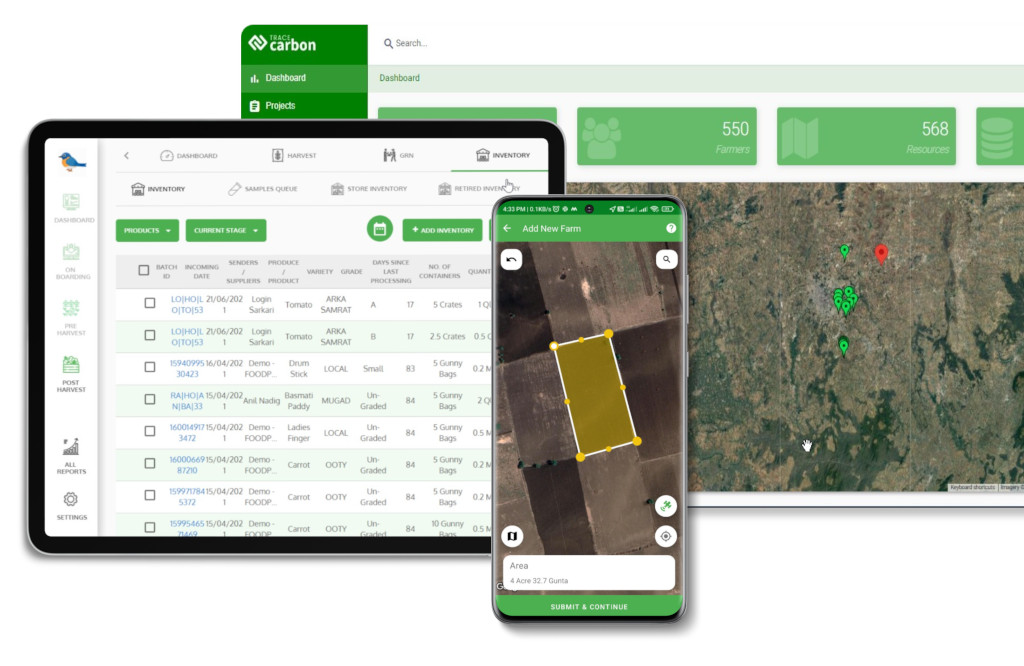Contact: +91 99725 24322 |
Menu
Menu
Quick summary: Simplify your EUDR compliance journey with TraceX's platform. Ensure transparency, monitor deforestation risks, and lead in sustainable practices. Learn more!

EUDR compliance refers to meeting the requirements of the EU Deforestation Regulation, which mandates that certain commodities—like soy, cocoa, palm oil, and timber—must be proven to be deforestation-free and legally produced. Companies must collect geolocation data, verify land-use legality, and submit due diligence statements to EU authorities. Non-compliance can result in fines, blocked imports, and legal liability for both operators and traders.
EUDR compliance is entering a critical phase in 2025, with tighter enforcement and increased scrutiny on traceability and deforestation-free sourcing. This blog outlines key regulatory changes, industry challenges, and actionable steps to help your business stay ahead and audit-ready.
EUDR mandates that all products entering the EU market must be proven to be deforestation-free, legally produced, and fully traceable back to the plot of land where they were grown. This means businesses must provide accurate geolocation data (point or polygon), due diligence statements (DDS), and risk assessments for every shipment. And here’s the kicker—if even one data point is missing or flawed, the shipment could be blocked.
So, who’s impacted?
Key Takeaways
EUDR compliance means proving that your products—like coffee, cocoa, palm oil, or timber—are deforestation-free and legally sourced, using precise geolocation and documentation. For many businesses, it’s a high-stakes challenge involving complex supplier data and evolving legal standards. Digital traceability platforms like TraceX streamline the process by automating polygon mapping, risk scoring, and due diligence reporting—making compliance clear, fast, and audit-ready.
EUDR compliance is no longer just a policy to skim through—it’s a legal obligation for any business involved in importing, exporting, or trading key commodities like coffee, cocoa, soy, palm, wood, and rubber into the European Union. Starting December 30, 2025, if you can’t prove your product is deforestation-free and fully traceable—you don’t make it to the EU market. Full stop.

But what exactly does “compliance” mean under the EUDR system in 2025? Here’s what businesses need to get right:
Every batch of product must be traced to its origin—down to the exact piece of land it was grown or harvested on.

Every shipment must be accompanied by a digitally filed DDS proving that the goods are:
This document includes everything from GeoJSON files to supplier info, volume, product type, harvest date, and evidence of risk assessment.
Navigating EUDR Risk & Reporting? Start Here:
Learn how the EU categorizes countries as low-, standard-, or high-risk and what that means for your supply chain.
A step-by-step guide to submitting compliant DDS documentation through the EU portal.
EUDR introduces a risk classification system—countries and regions are benchmarked into:
If you source from high-deforestation areas , you’ll face stricter checks, more documentation, and more frequent audits.
If you’re an exporter, cooperative manager, procurement officer, or compliance lead, EUDR is now part of your job description. You want to:
And what’s standing in your way? Disconnected supplier data. Manual traceability. Poor documentation. That’s where digital traceability platforms like TraceX help you turn EUDR compliance from a threat into a competitive edge.
A leading tyre manufacturer overcame EUDR compliance challenges by adopting GeoJSON mapping technology, ensuring a deforestation-free and sustainable natural rubber supply chain.
If you’re a compliance or procurement lead , your job isn’t just about sourcing products—it’s about proving exactly where they came from, how they were produced, and whether they meet every regulation tied to them.
And with the EU Deforestation Regulation (EUDR) now in full force, the stakes are higher than ever.
You’re not just checking boxes. You’re working toward:
Where a Traceability Platform Like TraceX Fits In
Imagine having a system where:
Still stuck in spreadsheets while your buyers demand EUDR-compliant documentation on-demand? You’re not alone. For most procurement or sustainability leads, managing supplier documents, validating land coordinates, and filing accurate DDS (Due Diligence Statements) can feel like juggling fire in a regulatory minefield.
The TraceX EUDR Compliance Platform is designed to help businesses align with the European Union’s Deforestation Regulation (EUDR) by ensuring transparency, traceability, and compliance across the supply chain.
You need to track every input, batch, and supplier — from the moment a crop is planted to the time it leaves your port.
TraceX automates this traceability journey, linking field activities, harvest records, and procurement batches to ensure complete, timestamped visibility. When auditors ask for “proof,” you have it at your fingertips.
Not just any polygon will do. Under EUDR, your land data must be geo-accurate, complete, and regulation-aligned.
TraceX captures polygon boundaries, cross-verifies them with satellite imagery, and stores key metadata like land titles, farmer details, and crop type — ensuring that every declaration is plot-specific and audit-proof.
Manually compiling DDS documentation? That’s a recipe for delays and errors.
TraceX automatically creates DDS forms, bundles them with supporting documents (like satellite checks, risk scores, and supplier declarations), and formats them for EUDR submission.
Need reports for audits, buyers, or regulators? One click. Fully backed by real-time supply chain data.
Some countries may be high-risk. Some farms may fall in deforestation zones.
TraceX uses built-in risk intelligence to classify locations, flag discrepancies, and issue real-time alerts — so you can take action before a shipment gets stuck at customs.
From volume thresholds to expiry dates on DDS, TraceX helps you stay ahead of regulatory landmines.
Your traceability system shouldn’t live in a silo.
TraceX integrates seamlessly with your procurement platforms, input inventory, and lab testing systems — ensuring that everything from purchase orders to pesticide usage feeds into your compliance documentation automatically.
No double data entry. No messy email threads. Just clean, continuous data from ground to buyer.
With EUDR enforcement ramping up in 2025, manual systems just won’t cut it anymore.
You don’t just need traceability — you need a platform that’s built for dynamic regulations, global audits, and supplier diversity.
TraceX makes it possible to stay compliant and competitive — without drowning your team in checklists and spreadsheets.

Imagine this: your next export to the EU sails through customs — no delays, no documentation back-and-forth, no anxious follow-ups. That’s not wishful thinking — it’s what EUDR-ready supply chains are built for.
Here’s what success really looks like when you digitize your traceability:
You’re not scrambling to fix a missing GeoJSON or chasing last-minute declarations.
Instead, your DDS is pre-validated, every plot geotagged, and your documentation — already in your buyer’s inbox before the shipment leaves the warehouse.
When your data is clean, transparent, and audit-ready, buyers notice.
You become more than just a supplier — you become a partner they trust in a high-risk regulatory environment.
Buyers don’t want to micromanage your documentation.
They want proactive proof. You give them clarity, not questions — and that earns you repeat business, not rejection letters.
Non-compliance doesn’t just mean fines — it means lost markets.
TraceX helps you detect and fix issues before they escalate, protecting your brand, your certifications, and your margins.
EUDR isn’t just another regulation — it’s the new baseline for global trade with the EU. As 2025 brings stricter enforcement, the companies that act now to digitize traceability, validate supply origins, and streamline due diligence will lead the market — not just survive it. Whether you’re sourcing cocoa, coffee, timber, or soy, the time to future-proof your supply chain is today.
The EUDR requires the acquisition of geographic coordinates for the land where commodities are produced, a critical step in verifying deforestation absence. Employ various methods, such as mobile apps and GIS, to ensure compliance. Non-compliance with coordinate provision is a violation of the Regulation.
Combining commodities with a deforestation-free origin and those with an unknown origin is strictly prohibited. Full identity preservation and chain of custody is a mandatory requirement.
The Regulation requires that operators (or traders which are not SMEs) trace every relevant commodity back to its plot of land before making it available or placing it on the market, or before exporting it
Get a clear overview of the regulation and who it affects.
Learn which commodities, geographies, and operators are covered.
